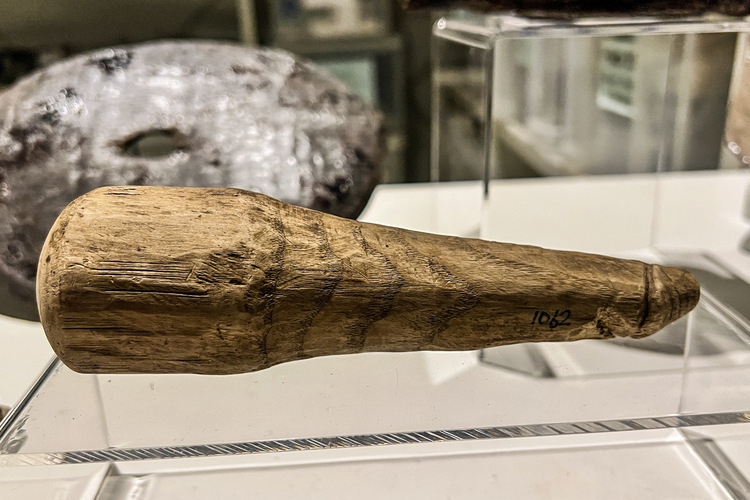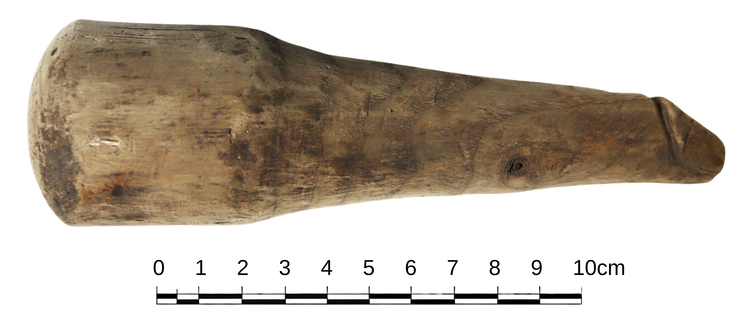Touch Wood: ‘Oldest Roman sex toy' unearthed at Hadrian's Wall
Posted 20 February, 2023

A wooden artefact discovered at Hadrian's Wall could be a near 2,000-year-old example of a Roman era sex toy, according to archaeologists.
Experts from (opens in a new window)University College Dublin and Newcastle University believe the object, found in a ditch, may be the earliest example of a wooden phallus found anywhere in the boundaries of the Roman empire.
Unearth at the Roman Fort of Vindolanda in northern England, which once marked the farthest northern fringes of the empire, the wooden object in the shape of a penis was initially recorded as being a darning tool, according to (opens in a new window)the study published in the journal Antiquity.
Three possible explanations for the phallus’ purpose are discussed in the paper, and one of these is that the life-sized object, 6.3 inches in length, was used as a sexual implement.
“The size of the phallus and the fact that it was carved from wood raises a number of questions to its use in antiquity,” said Dr Rob Collins, Newcastle University.
“We cannot be certain of its intended use, in contrast to most other phallic objects that make symbolic use of that shape for a clear function, like a good luck charm. We know that the ancient Romans and Greeks used sexual implements – this object from Vindolanda could be an example of one.”

Phalli were widespread across the Roman Empire, and were often depicted in painted frescoes and mosaics or formed part of the decoration of other objects such as being embellished onto a knife handle or incised into pottery.
Small, portable phalli made of bone or metal were commonly worn as pendants around the neck for good luck.
But the research team think the object found at Vindolanda may have been used for more than warding off evil as analysis revealed that both ends of the phallus are noticeably smoother, indicating repeated contact over time.
Another possibility for the object is that it may have been used as a pestle – either for culinary purposes or to grind ingredients for cosmetics or medicinal treatments.
The third possible function was that the phallus may have been slotted into a statue which passers-by would touch absorb or activate protection from misfortune - which was common throughout the Roman empire.
Evidence indicates though that the object was either indoors or at least not in an exposed position outside for any length of time.
“Wooden objects would have been commonplace in the ancient world, but only survive in very particular conditions – in northern Europe normally in dark, damp, and oxygen free deposits,” said (opens in a new window)Dr Rob Sands, University College Dublin.
“So, the Vindolanda phallus is an extremely rare survival. It survived for nearly 2000 years to be recovered by the Vindolanda Trust because preservation conditions have so far remained stable. However, climate change and altering water tables mean that the survival of objects like this are under ever increasing threat.”
Barbara Birley, Curator at the Vindolanda Trust, added: “This rediscovery shows the real legacy value of having such an incredible collection of material from one site and being able to reassess that material. The wooden phallus may well be currently unique in its survival from this time, but it is unlikely to have been the only one of its kind used at the site, along the frontier, or indeed in Roman Britain.”
The phallus is now on display in the (opens in a new window)Vindolanda museum.
By: David Kearns, Digital Journalist / Media Officer, UCD University Relations






